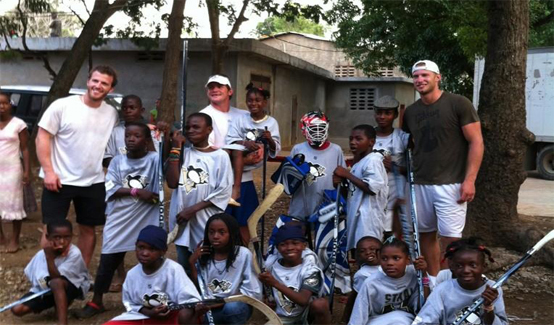
Recently, I wrapped up my second year of teaching Sport Agency Management at Indiana University Bloomington. It has been a true blessing to have been given the opportunity to teach driven, intelligent students, which is something I hope to continue doing for the rest of my life.
The Sport Agency Management course is intended to provide students with a greater understanding of the current issues and laws related to the sport agent profession and focuses primarily on the legal and practical way to act in the capacity of a sport agent and/or operate a sport agency. In particular, the focus of the course is on NCAA, state, and federal rules and regulations, players’ association regulations, collective bargaining agreements, client services, and various duties involved in the representation of athletes.
My Fall 2012 students’ term papers required them to solicit practicing sports agents who had not formerly been interviewed for an article on Sports Agent Blog. Students were told to interview their chosen subjects and provide a write-up based on their discussions. With permission from the interviewee and the student, I will be publishing some of the results that were submitted to me for review (and grading). The following is a submission from Tyler Wagner, who profiled agent Allain Roy.
Founded in 2002 by President and CEO Allain Roy, CMG Sports is one of the fastest growing hockey only agencies in North America. Roy’s love for the game he had played since he was four years old had a big influence on why he decided to become a hockey agent. A goaltender, Allain was drafted #69 overall by the original Winnipeg Jets in the 1989 NHL Entry Draft. Over the course of his career, Al played four years at Harvard University, won a silver medal in the 1994 Winter Olympics as a member of the Canadian National Team, spent time overseas in Finland and Austria, and even played for the St. Louis Vipers, a professional roller hockey team in St. Louis. After his playing career, Roy went on to run Crimson Marketing Group, a technology and web development company after operating a fine dining restaurant and serving as VP of Operations for the Vipers from 1997 to 1999.
For most people with limited knowledge of the player agent industry, firms such as Creative Artists Agency (CAA) and Octagon are the two primary agencies that stick out. Both firms have been in business for close to 40 years and both have expanded their brands across multiple professional sports and industries. In the cutthroat business that is professional sports, it can be very difficult for smaller, growing firms such as CMG Sports to compete against these more established firms to sign clients. Part of the reason Allain believes CMG Sports has been successful has to do with their ability to establish a successful business strategy. When asked how CMG Sports has been able to compete over the past decade with CAA and Octagon, Roy said, “It is not easy, but we have worked hard to secure our reputation as a “hockey only” agency, while CAA and Octagon focus on multiple sports. The key in my mind is good service and special attention to our clients. Some of the larger agencies have opted for a volume-based approach, while we focus on quality of clients over quantity. Over time, our model seems to be paying off.”
The primary job responsibility of a sports agent is to negotiate employment and/or endorsement contracts for their athlete. Before even beginning a negotiation with a team, it is important for the agent to determine their client’s status and value within the market based on the player’s age, previous contract, injuries, etc. After this first step, the agent will take their player’s perceived value with data behind it to the team to begin negotiations. An interesting note at this step is that not all teams in the league follow the same procedure. According to Roy, some teams will make the initial offer, while others will wait for the agent to make the offer. Most of the time once this has happened, the negotiations are quick if the player has a set value within the market, while others can take time if the team and player agent are far apart.
Within CMG Sports, several clients are currently playing in North America and others are playing in Europe. With this comes two different negotiation processes for Allain and his partners. In the NHL, the process is often more involved because there are more factors to compare where as in Europe once the player says that he is willing to play overseas, the process moves quickly. Once the player and agent communicate that the player is willing to go overseas to play, the European team will make the first offer that may be negotiated a small amount. From there, the living accommodations, car, insurance, bonuses, flights, etc., for the player enter into the negotiation until a contract has been signed.
While the current NHL lockout has put many players and team employees’ jobs to a halt, agents are still hard at work more than ever. Even though the NHL is locked out, the major junior, minor, and European leagues are still playing. The day-to-day job responsibilities of an agent are still the same as they are recruiting players at all levels. Also, many players have gone to Europe to play during the lockout. Agents have an added responsibility of finding their current NHL clients potential teams in Europe and acquiring the necessary insurance and other minor details for them to sign a contract and play.
This is not the first lockout in the history of the NHL. It is, however, the first lockout since the social media mogul, Twitter was developed in 2006. On Twitter, professional athletes have the biggest following so it is vital that they understand that once a message is posted, there is no return. Even so, frustrated players use social media as a platform to vent their frustrations about the lockout. For example, recently, Chicago Blackhawks forward Dave Bolland retweeted a message calling for commissioner Gary Bettman’s death. Several other players have tweeted messages referring to Bettman as an “idiot” and a “cancer.”
While social media can have a negative impact on professional sports during lockout periods, it can also have a very positive impact on the industry as a whole. Today, every professional sports organization has at least one Twitter account, while almost every athlete has one. Because of this, Allain believes adaptation as agents is key. “Most of my clients 16 to 25 never want to talk, but would rather text or IM. Once agencies understand how to harness the power of social media, they can use it to their advantage in many facets: marketing, player profile pushes, visibility to scouts, etc.” he said on how social media has changed the agent industry.
Unlike the process of signing a prospective client pre-draft in the National Basketball Association and National Football League, the process is a little different in the National Hockey League. In the NBA and NFL, players are only drafted after they have attended at least one year of college for the NBA, and three years of college for the NFL. NBA and NFL player agents are not allowed to talk or sign prospective clients until after their senior year of college or until the player has decided to leave school early and enter the draft. This is not the case in the NHL however, as any North American player 18-20 years old and Europeans of any age entering the league for the first time are eligible for the NHL draft. With these age requirements, kids can be drafted right out of High School, during their junior hockey careers, or while they are in college (so long as the player does not hire an agent). Once drafted, players are considered the “property” of the team that drafts them for the next two years. If a player has not signed a contract with the team and is under the age of 20, the player can re-enter the draft. An exception to the rule is that teams retain the rights to players that go to college or are in already college until 30 days after the player leaves school.
In North America, the highest level of junior hockey occurs in the Canadian Hockey League (CHL), which consists of three separate leagues: Quebec Major Junior Hockey League (QMJHL), Ontario Hockey League (OHL) and Western Hockey League (WHL). Players in these leagues range from 16-20 years old, and with the age minimum of 18 for the NHL draft, it is necessary for NHL agents to begin looking for clients as early as possible. Already, CMG Sports has a list of 43 2013 NHL Draft eligible players they provide services to. When asked how CMG Sports goes about doing this, Roy responded, “We usually start tracking and approaching players right before their Junior drafts (15 years old in most leagues and 14 years old in the WHL). We watch a lot of Amateur games and meet with a lot of families to recruit players. We look only for NHL prospects, which is highly competitive and a narrow market.”
With signing kids between ages 14-20, comes one of the biggest difficulties agents face: client maturity levels. In professional hockey each kid has a different maturity level because of the different avenues a hockey player can go to reach the NHL. In Al’s opinion, the CHL major junior hockey and collegiate routes are very different, but still somewhat even. He explained that for kids playing in the CHL, there could be more of learning curve off the ice because they are younger and live with local families where as kids who go on to college have already adjusted to being independent and organized on their own at school. However, the kids who go through the CHL have more experience dealing with the pro lifestyle because their schedule is similar to that of an NHL team. In college, the schedule is shorter and generally games are played on the weekends only.
Overall, the life of a professional sports agent can be compared to a roller coaster ride with many highs and lows. For Al, the highest high is witnessing his clients’ successful journey from beginning to end. “The best part about my job is witnessing our players develop and finally achieving their dream of playing in the NHL. It is a great experience to see a client get drafted, sign his first contract, play his first pro game, and finally become a regular NHLer. We are fortunate in hockey to be dealing with high quality individuals,” he said. However, when only a small percentage of people go on to be full-time NHL players, the lows of disappointment can be expected. “On the other hand, the most difficult part of our job is dealing with disappointments daily and keeping our clients positive. Many parents and players have unattainable expectations that need to be tempered, and having these conversations are not always easy. Being honest with a client right off the start is very important so that everyone is on the same page,” Roy concluded.
